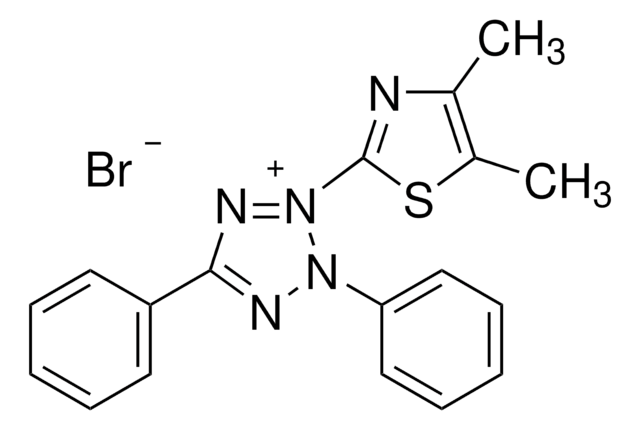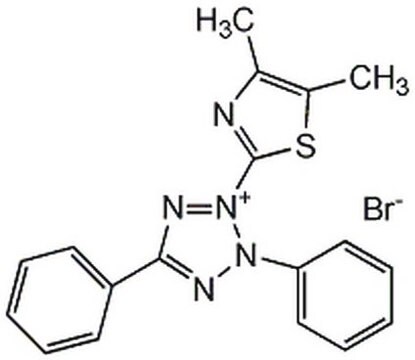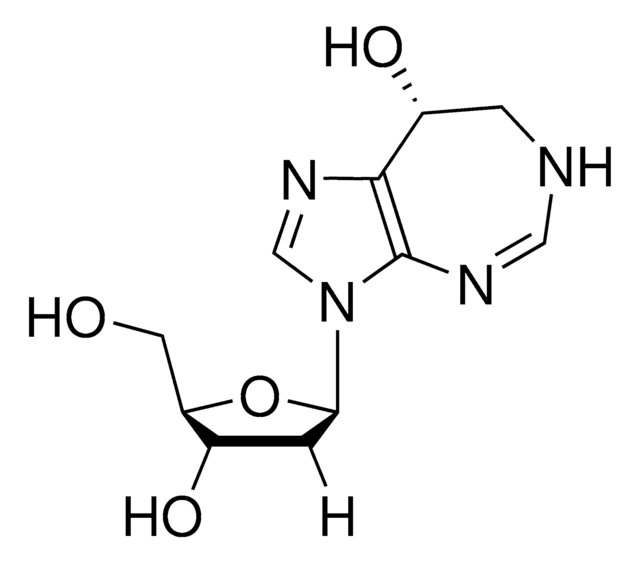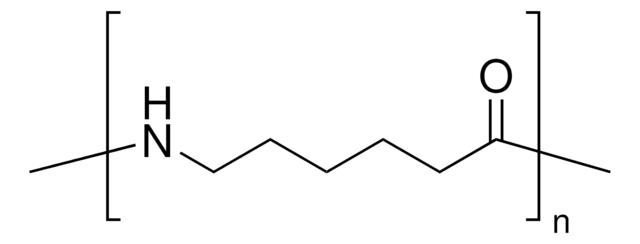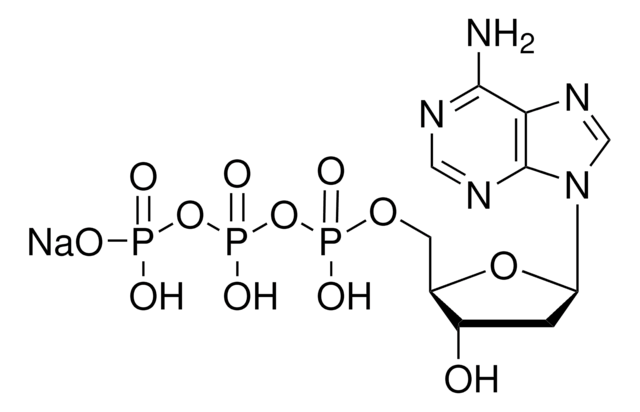General description
Nitric oxide synthase, endothelial (UniProt: P29473; also known as EC:1.14.13.39; constitutive NOS, EC-NOS, eNOS, NOS III, NOS type III) is encoded by the NOS3 gene (Gene ID: 287024) in bovine. The eNOS is mainly expressed in vascular endothelial cells and cardiomyocytes. It produces nitric oxide (NO) that is implicated in vascular smooth muscle relaxation through a cGMP-mediated signal transduction pathway. NO mediates vascular endothelial growth factor (VEGF)-induced angiogenesis in coronary vessels and promotes blood clotting through the activation of platelets. In endothelial cells, eNOS is localized in specialized plasmalemmal pockets known as caveolae, which contain a scaffolding protein termed caveolin. Acylation of eNOS by either myristate or palmitate targets it to caveolae, which facilitates enzyme activation following receptor stimulation. In a resting cell, eNOS is inhibited by its interaction with caveolin. Following agonist activation, eNOS dissociates from caveolin and translocates to the cytosol. The eNOS is generally activated in response to an increase in intracellular Ca2+ following stimulation with receptor-dependent agonists such as acetylcholine. However, shear stress can also activate this enzyme independently of Ca2+ level changes, via a tyrosine kinase-dependent mechanism involving its phosphorylation and redistribution. Perturbations of eNOS phosphorylation have been reported in a number of diseases. The primary sites where eNOS gets phosphorylated are multiple serine residues and, to a lesser extent, on tyrosine and threonine residues. Ser 602 is reported to lie at the N-terminal edge of the 42-residue eNOS autoinhibitory element and is phosphorylated by ERK. Low concentrations of nitric oxide in the endothelial cells prevent their apoptotic death and maintain their integrity during inflammation and atherosclerosis. Distorted production of nitric oxide in endothelial cells has been linked to hypertension, hypercholesterolemia, diabetes, and even cardiac failure. (Ref.: Rafikov, R., et al. (2011). J. Endocrinol. 210(3): 271-284).
Specificity
This polyclonal antibody specifically detects the phospho-Ser602 in eNOS. It targets a sequence of 11 amino acids surrounding Ser602.
Immunogen
A linear peptide of 11 amino acids from the N-terminal edge of the 42-residue bovine eNOS autoinhibitory element.
Application
Detect endothelial Nitric oxide synthase using this rabbit polyclonal Anti-phospho-eNOS (Ser602), Cat. No. ABS1631. It has been tested for use in ELISA and Western Blotting.
Research Category
Signaling
Western Blotting Analysis: A representative lot detected phospho-eNOS (Ser602) in bovine aortic endothelial cell lysate (BAEC) (Salerno, J.C. et. al. (2014). Biosci Rep. 34(5). pii: e00137).
Western Blotting Analysis: A 1:250-1,000 dilution from a representative lot detected phospho-eNOS (Ser602) in bovine aortic endothelial cell lysates (Courtesy of Dr. Carol Chrestensen at Kennesaw State University, Kennesaw, GA).
ELISA Analysis: A 1:64,000 dilution from a representative lot detected phospho-eNOS (Ser602) in Phospho-602 peptide/Non-Phospho-602 peptide (Courtesy of Dr. Carol Chrestensen at Kennesaw State University, Kennesaw, GA).
Quality
Evaluated by Western Blotting in bovine aortic endothelial cell lysates.
Western Blotting Analysis: A 1:1,000 dilution of this antibody detected phospho-eNOS (Ser602) in 10 µg of bovine aortic endothelial cell lysate.
Target description
~150 kDa observed; 133.29 kDa calculated. Uncharacterized bands may be observed in some lysate(s).
Physical form
Affinity Purified
Format: Purified
Purified rabbit polyclonal antibody in PBS with 0.02% sodium azide.
Storage and Stability
Stable for 1 year at 2-8°C from date of receipt.
Other Notes
Concentration: Please refer to lot specific datasheet.
Disclaimer
Unless otherwise stated in our catalog or other company documentation accompanying the product(s), our products are intended for research use only and are not to be used for any other purpose, which includes but is not limited to, unauthorized commercial uses, in vitro diagnostic uses, ex vivo or in vivo therapeutic uses or any type of consumption or application to humans or animals.

